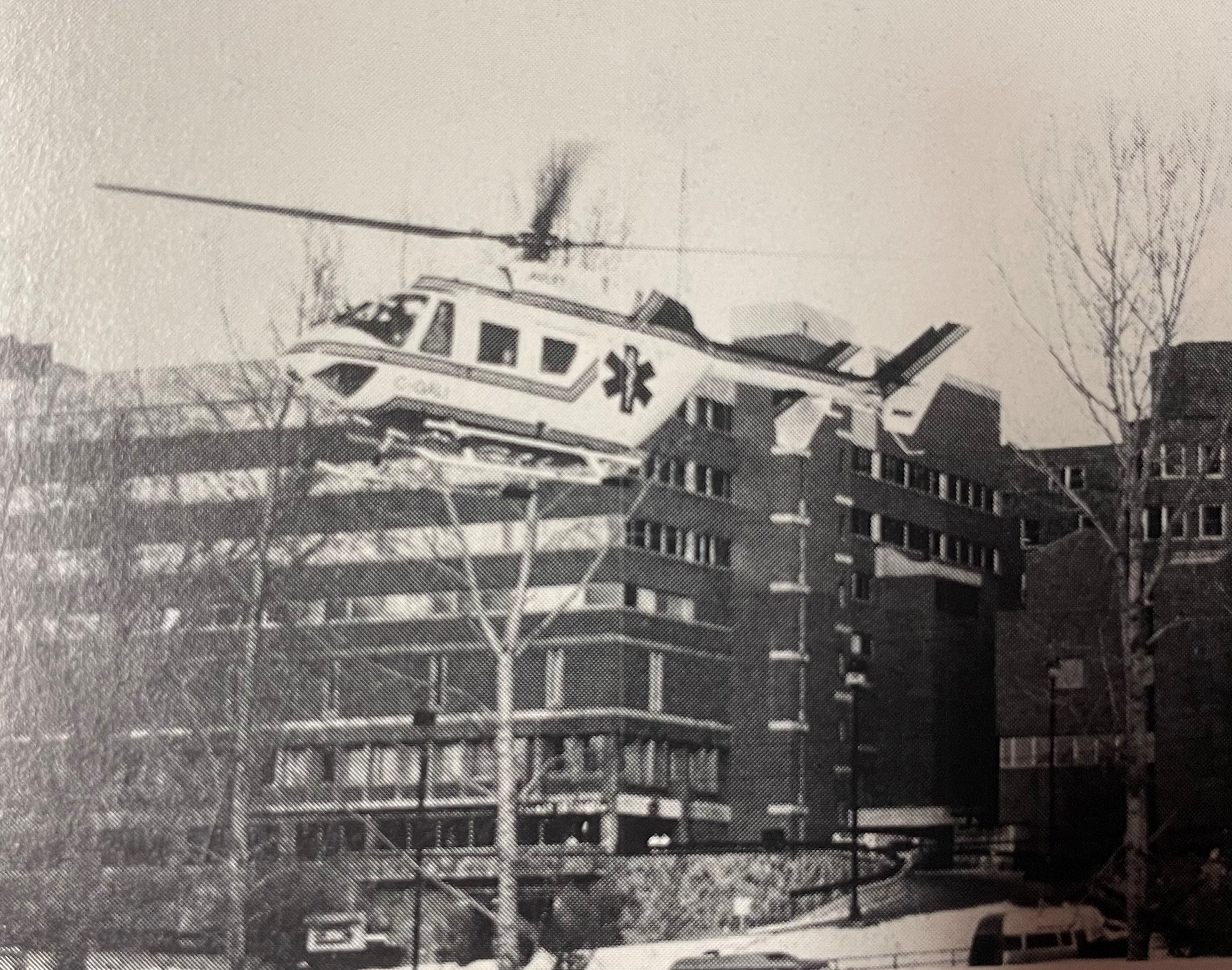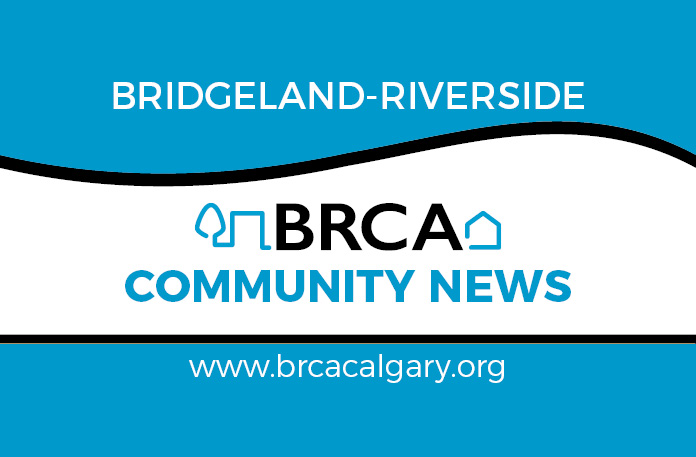by Deb Lee, Heritage Committee and CGH Project
Nowadays it is not uncommon to hear a helicopter flying overhead, especially at night. We know that it’s likely the HAWCS police helicopter patrolling the area related to criminal activity. But if you lived near McDougall Rd in the late 1980s, hearing a helicopter meant something very different!
Starting in 1986 the Lions Air Ambulance regularly transported critically ill patients to the Calgary General Hospital (CGH). Any time of the day or night the helicopter would land on the baseball diamond to the south of the hospital, sometimes relying on the ball players to first clear the field. A ground ambulance would then transport the patient to the hospital up the hill. The extra transfer only added 15 minutes, but it wasn’t long before ‘the General’ initiated major updates to improve their trauma program. Collaboration in the following years with the Foothills Hospital resulted in the STARS air ambulance that we know today.
What had led to this innovation? Many of the city’s medical and health care practitioners had gathered at the General Hospital’s annual McKid Lecture that was focused on increasing trauma survival rates. Dr. Trunkey, an expert in the field was invited to share the latest in research and clinical practice. At that time in Alberta, accidents and trauma were the leading cause of death for people under 50, so it was evident that a co-ordinated health system response was needed for Calgary and area. Costing $225,000, an elevated helicopter pad was soon built adjacent to the Emergency Department of ‘the General’. Other physical changes were made within the hospital including upgrades to the thirty-one bed Intensive Care Unit which had been operating since 1978.
Success for any health initiative goes beyond the physical structures. From the accident to the trauma centre and the return home, it’s the people and their co-ordinated responses that are critical to saving lives. The Hospital board was fully supportive as was the CGH administration. Medical leadership was provided by a number of physicians over the years – Dr. Dean Sandham, Dr. Bill Dunlop, and Dr. John Kortbeek – who offered their unique skills to make significant contributions to the program. Numerous hospital departments committed to a dedicated multi-disciplinary response team. Dr. Rob Abernethy led the Emergency Department processes, which went beyond the CGH staff to those in rural areas who were often the first to encounter trauma patients. A toll-free hotline for rural physicians needing emergency consultation with CGH doctors was set up. Nurses and ambulance personnel in rural areas benefitted from the basic trauma life support course that was offered by CGH.
Trauma cases are complex and once out of ICU, patients were cared for in different wards such as Orthopaedics, Neurology, or General Surgery. With recovery comes the next step of rehabilitation, where patients were helped to regain as much of their pre-trauma function as possible. Each component was critical to success and with the involvement of Pam Holberton, the first clinical nurse specialist, the care of trauma patients was co-ordinated and optimized in all areas of the hospital. Important data was collected, showing that overall survival rates improved significantly.
The community stepped up with extra funding for specialized equipment and resources. Contributions came from the Calgary Police Service, Lions Club, Canadian Legion, and Suncor to name a few.
The closure of CGH in 1997 ended the helicopter landings in Bridgeland, with the trauma services transferred to other hospitals. It’s a source of pride and a part of our history that ‘the General’ offered a world class trauma program for Calgary and area for over a decade.

Click here to the Bridgeland/Riverside Community News home page for the latest Bridgeland/Riverside community updates.











